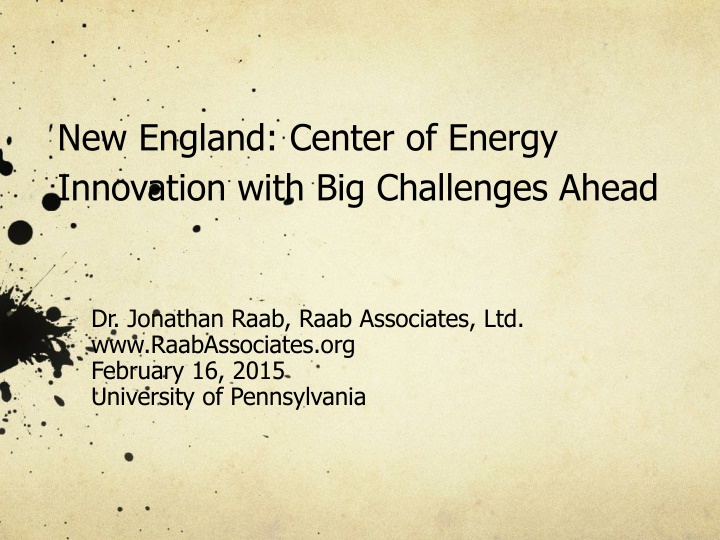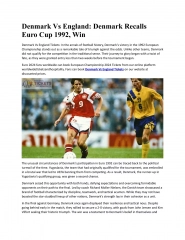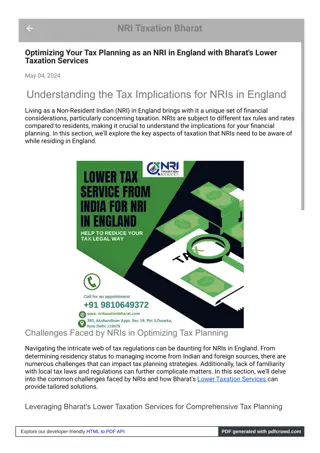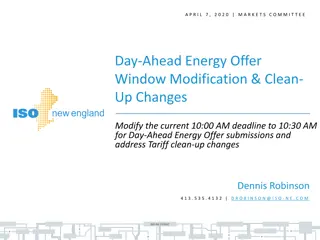New England Energy Innovation Challenges Ahead
The article discusses the history of energy coordination organizations in New England, stakeholder engagement timelines, electricity restructuring roundtables, and initiatives like the New England Demand Response Initiative and the Regional Greenhouse Gas Initiative. It highlights key events, stakeholders, and recommendations shaping energy and climate policies in the region.
Download Presentation

Please find below an Image/Link to download the presentation.
The content on the website is provided AS IS for your information and personal use only. It may not be sold, licensed, or shared on other websites without obtaining consent from the author.If you encounter any issues during the download, it is possible that the publisher has removed the file from their server.
You are allowed to download the files provided on this website for personal or commercial use, subject to the condition that they are used lawfully. All files are the property of their respective owners.
The content on the website is provided AS IS for your information and personal use only. It may not be sold, licensed, or shared on other websites without obtaining consent from the author.
E N D
Presentation Transcript
New England: Center of Energy Innovation with Big Challenges Ahead Dr. Jonathan Raab, Raab Associates, Ltd. www.RaabAssociates.org February 16, 2015 University of Pennsylvania
New England States: History of Coordination Organizations on Energy/Air Issues New England Governors Conference Colonial Days (informally); 1937 formalized NE States Coordinated Air Use Mgt. (NESCAUM) (6 NE States 1967; NY 1970; NJ 1979) NEPOOL and ISO New England/RTO 1971 and 1997/2005 NE States Committee on Electricity (NESCOE) 2007 2
NE Stakeholder Energy/Climate Engagement Timeline: 1988-2000 3
NE Stakeholder Energy/Climate Engagement Timeline: 2001-Present 4
NE Electricity Restructuring Roundtable Substance All NE states except VT restructured in 1990 s (utilities DO NOT own generation anymore wires only companies) Unique forum to discuss current energy and now climate policy related issues in New England. Multiple perspectives shared, new ideas often road-tested. Process Panels and keynote speakers on current issues/challenges 143 Roundtables held so far! Have been meeting 5-10 times a year for 18+ years in Boston. Roundtable now averages over 200 participants per session plus 100 live streaming, with listserv of over 3,000 New England stakeholders. September 2014 Roundtable included US EPA Secretary Gina McCarthy; FERC Chairman Cheryl LaFleur; and ISO New England CEO Gordon van Welie 7
New England Demand Response Initiative (NEDRI) Substance Developed 38 major recommendations for incorporating demand response into retail and wholesale markets in New England. Covered short-term price-responsive load, retail pricing and metering strategies, reliability-driven DR, and longer-term energy efficiency investments. Process Included representative from 45 state and federal agencies, suppliers, consumers, and environmental organizations. Met for 19 days in plenary session in 2002-2003 (June); included several work groups developed consensus report Funded by US EPA, US DOE, ISO-New England, the New York ISO, and the Energy Foundation Regulatory Assistance Project managed technical team (including LBNL/ORNL); Raab Associates facilitated the stakeholder process. 6
Regional Greenhouse Gas Initiative-(RGGI) Substance Developed a greenhouse gas cap and trade system for electricity sector in 10 Northeast and Mid-Atlantic states Reduces GHG emissions 10% below 1990 emissions by 2020, allows for offsets, and establishes a public benefits fund 2012 review resulted in decreasing 2014 cap 45%, with additional decreases of 2.5%/year 2015-2020 Held over 20 auctions of allowances, and raised over $1.75 billion for public benefit investments (mainly EE) Process Original RGGI Process: 24-member regional stakeholder group to provide advice and act as sounding board for states. Included separate resource panel; ICF and REMI ran energy system and economic modeling; Raab Associates facilitated 9 day-long meetings; Meanwhile, states negotiated MOU in separate, parallel process, signed in December 2005 by seven states (NY, NJ, VT, NH, CT, DE, and ME) and later joined by MD, RI, and MA but NJ withdrew; PA active observer 7
NE States Develop 2020 Greenhouse Gas Plans Using Stakeholder Processes Substance NE Governors & Eastern Canadian Premier agreement to reduce GHG cross all sectors by at least 10% 2020 and 75- 80% eventually (now assumed by 2050) NE States develop comprehensive plans covering buildings, transportation, electricity supply, solid waste, etc. Reduce GHG emissions by 10-25% below 1990 levels by 2020 Process States used stakeholder processes to develop plans in different ways generally includes steering committee, working groups, extensive state involvement, technical consultants, and facilitation RI (2001-6); CT (2002-4); ME (2003-4); VT (2008); NH (2009); and MA (2010) 8
Energy Efficiency: ACEEE 2014 State Rankings 9
Growth in MA Energy Efficiency Savings and Benefits 2008-2013 Annual MWH (Cumulative) Annual Gas MMBTU (Cumulative) Benefit ($1,000,000) (Cumulative) 9,000,000 $12,000 $9.9B Net Benefits 4.33 MMWh 8,000,000 Benefits - $-Dollar Avoided Costs ($1,000,000) (Cumulative) $10,000 Electric - MWH | Gas MMBTU [Cumulative Annual] 7,000,000 6,000,000 $8,000 5,000,000 $6,000 4,000,000 3,000,000 $4,000 | 1 2,000,000 $2,000 1,000,000 0 $0 2008 2009 2010 2011 2012 2013 Year
NE PV, Wind, & EE: Existing & Proposed 12
Renewables: Policies Renewable portfolio standards (RPS) Increasing % of electricity each year must come from new qualifying renewables most NE states have this Net metering Distributed electricity generation (e.g., rooftop solar) is sold back to the utility at retail rates Additional state incentives Renewable systems benefit charges Solar Renewable Energy Credits (SRECs) Challenges Solar/wind are intermittent resources need traditional generation, hydro, or storage to back up Safety concerns related to interconnection and feeding grid Relatively high cost (compared to EE) and revenue erosion for utilities related to selling back at retail 13
Renewables: PV/Solar New England: 500 MW already installed in all of NE; and ISO New England estimates 1,800 MW by 2023 Massachusetts Goal of 250 MW by 2017, but reached goal in 2013 and now almost 700 MW installed Installations in 350 of 351 MA cities & towns 4th nationally in new capacity being added Former Governor Patrick upped goal: 1,600 MW by 2020 But what will new Governor Baker do? Still relatively expensive energy, and rates are high. 14
Renewables: Wind On-Shore 800 MW installed, and over 3,000 MW in interconnection queue But most will not likely be built Mainly in northern NE and need transmission to get to population centers in MA, CT, and RI Plagued by visual impact and noise battles Off-Shore Cape Wind was first off-shore proposal in U.S. (over 300 MW), but after 10 years of legal battles apparently died last month Nonetheless NE considered Saudi Arabia of off-shore wind, and late January over 700,000 acres of off-shore wind auctioned by BOEM off MA/RI 15
Grid Modernization Focus on grid- and customer-facing modernization Building a new platform (think smart phone) for private sector and customers to innovate (think apps, think Nest thermostats) Integrating distributed resources and electric vehicles, and handling two-way power flow Demand response and smart appliances Likely need Advanced Metering Functionality can be very expensive Time Varying Rate MA Basic Service will be Time of Use Rate with Critical Peak price and opt out to peak time rebate 16
Energy Infrastructure NE at end of gas pipelines Reliance on natural gas increasing substantially Gas-fired electric generation increased from 15% to 46% between 2000 and 2013 Conversion from oil to gas space heating (e.g., 1/3 of Boston s oil heat converted to gas last decade) Challenge: Gas generated electricity doesn t have firm gas contracts so supply not guaranteed Electricity rates increased 60-70% this winter due to these constraints 18
Summary: Major NE Energy Challenges Building a major new gas pipeline (or two) into NE to reduce gas/electricity prices and enhance reliability in short-run, without undermining GHG goals Building transmission through Northern NE to bring low-carbon, less expensive resources to Southern NE Continuing to ramp-up EE, when already paying most per customer in U.S. (MA over 1 cent/kwh) Continuing to develop solar, when rates are high and its still relatively expensive 19 Harnessing off-shore wind Modernizing the electric grid, and exposing customers to time varying rates























